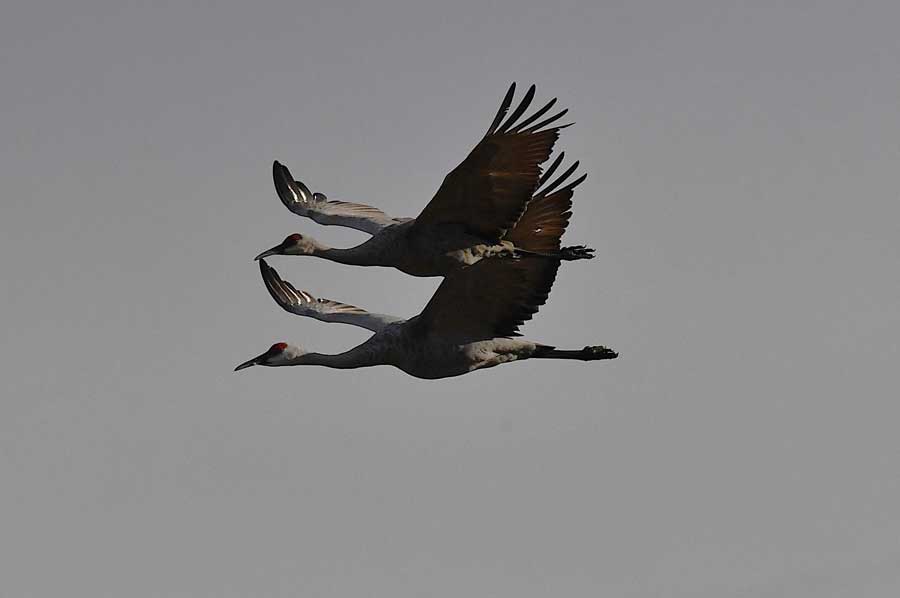In the early dawn last Tuesday, I parked on the south side of Camas National Wildlife Refuge as flock after flock of Sandhill cranes were already heading out for breakfast.
A few flocks of Canada geese joined the cranes as they headed out to feed in the stubble fields near the refuge.
I was in hopes of finding a herd of elk with the bulls bulging as they should be in the rutt now.
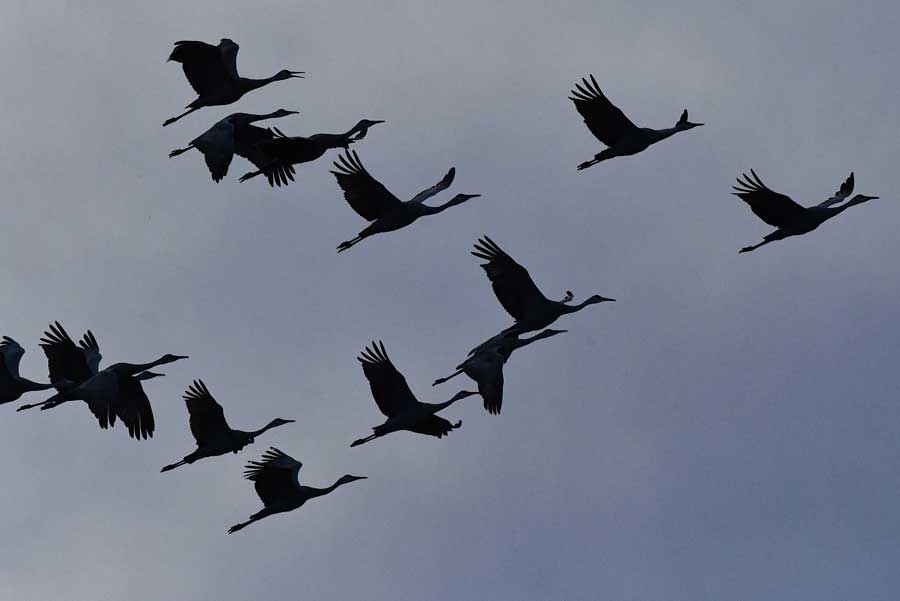 A flock of Sandhill cranes heading out in the early morning to feed in the area stubblefields near Camas NWR. | Bill Schiess, EastIdahoNews.com
A flock of Sandhill cranes heading out in the early morning to feed in the area stubblefields near Camas NWR. | Bill Schiess, EastIdahoNews.com
My goal was to hike to Sandhole Lake, the only area that contains water on the refuge now where the elk have been the last two years during the fall.
As I neared a dried up Rays Lake, I heard a bull elk bugle in the direction of Sandhole Lake, but it was not the song of a mature bull.
On my way to Sandhole, I met another photographer who had come in on a bike and was set up near the private land southwest of the lake. He told me he heard a couple of elk bugle on Monday on the west side of Rays Lake.
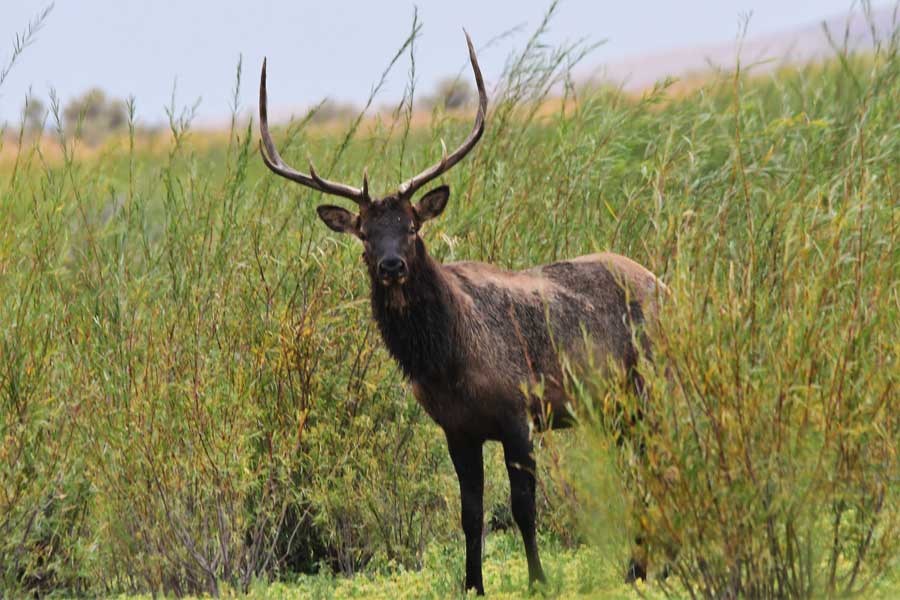 A lone young bull elk looks for a drink of water at Sandhole Lake. | Bill Schiess, EastIdahoNews.com
A lone young bull elk looks for a drink of water at Sandhole Lake. | Bill Schiess, EastIdahoNews.com
The cranes and geese appeared to be all out in the fields as they had quit flying.
When I got to Sandhole, there were ducks on the water and some Killdeer and American avocets scattered in the shallows. Several species of sparrows were working the edge of the bulrushs as I settled in a small pocket of them.
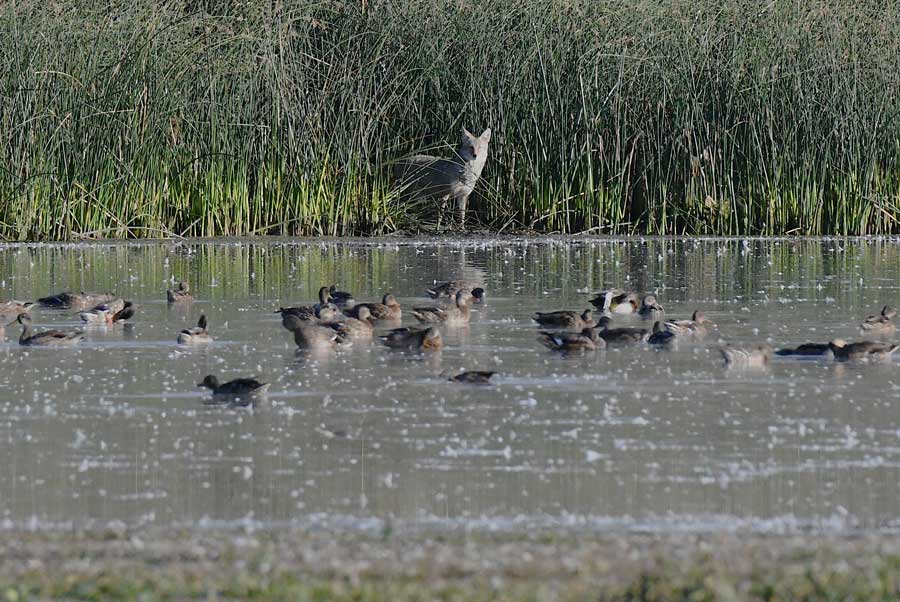 A coyote eyes some ducks resting on Sandhole Lake at Camas NWR. | Bill Schiess, EastIdahoNews.com
A coyote eyes some ducks resting on Sandhole Lake at Camas NWR. | Bill Schiess, EastIdahoNews.com
It was not long before three coyotes emerged from the willows on the far side of the water.
After waiting about an hour, I watched a small bull elk emerge from the willows to get a drink and not long after that a flock of cranes dropped in from high in the sky.
They appeared to be migrating from Montana or from further north. Large flocks of geese started coming from the fields to get water after eating all morning.
At noon, the cranes started making their way back to the water and I needed to head for home.
On my way back to my truck, I stopped at a well drilling rig on Rays Lake to visit with the workers. They are drilling a new well to replace the old well that had collapsed and they estimated that they would be done in about three weeks.
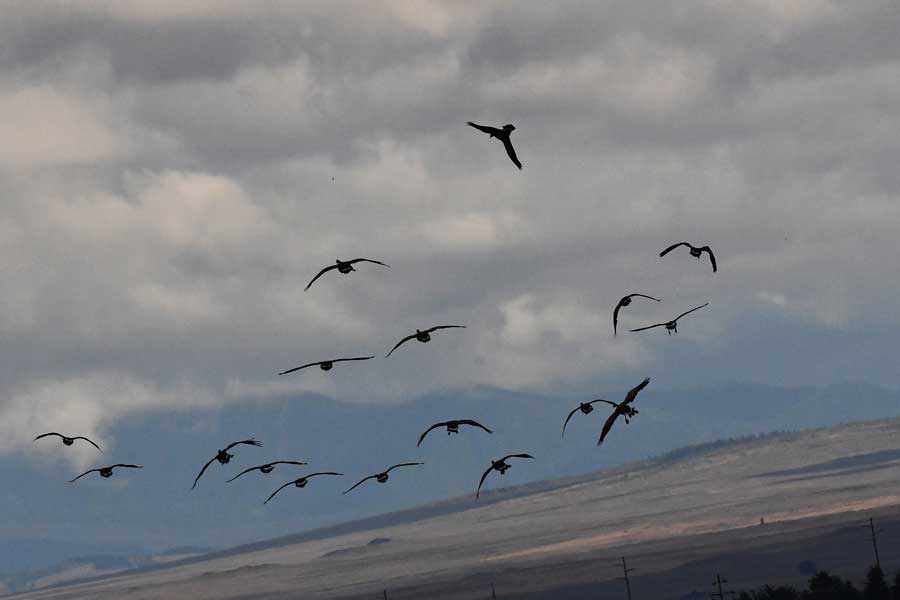 A flock of Canada geese returning to Sandhole Lake after feeding in the stubblefields. | Bill Schiess, EastIdahoNews.com
A flock of Canada geese returning to Sandhole Lake after feeding in the stubblefields. | Bill Schiess, EastIdahoNews.com
Earlier this year they had drilled a well at Mallard Slough, north of Rays Lake and west of Sandhole.
The new well is ready to supple water, but they explained that it cannot begin operating until the moratorium is lifted on pumping ground water. Without water, the habitat for wildlife is short of one critical element.
The hundreds of cranes at Camas NWR are just a fraction of the numbers that will show up. More will continue to drop in almost daily and they will be joined by some swans and Snow geese in the next month. Usually, the number of elk will also increase as the hunting seasons around the area will push them to the refuge.
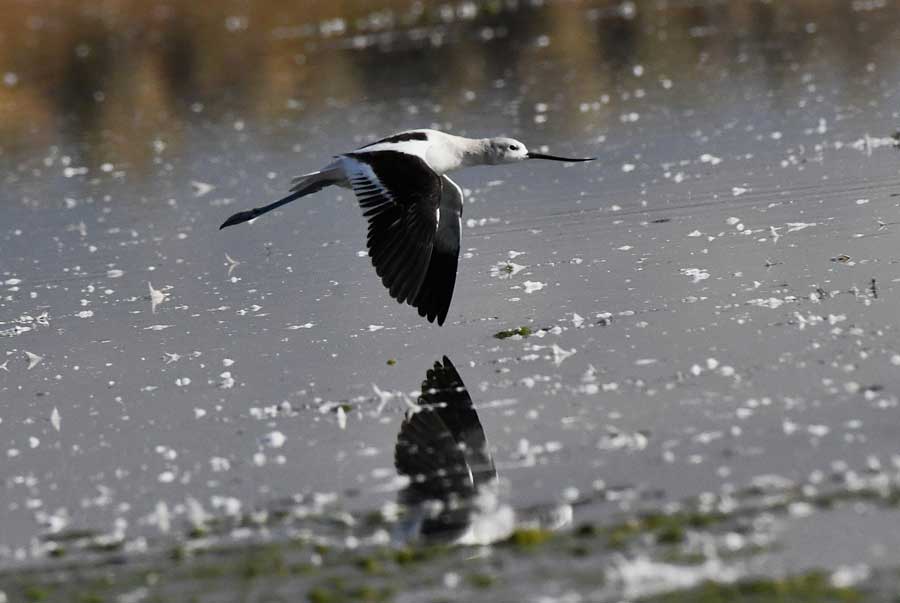 An American avocet flies along the shore of Sandhole Lake. | Bill Schiess, EastIdahoNews.com
An American avocet flies along the shore of Sandhole Lake. | Bill Schiess, EastIdahoNews.com
Also, if you like the migration of Sandhill cranes, Grays Lake is another great area to visit. The fall migration of raptors has not occurred yet but should begin in the next two weeks.
Fall migration is much different than spring migration. Birds and animals in the fall, may only stay a day or two before they move to their wintering areas.
The normalmigration of wildlife is usually enhanced by the addition of a few non-typical migrants.
Let us know if you run into an unexpected individual bird or animal. Be safe and enjoy the fall wildlife shows.
=htmlentities(get_the_title())?>%0D%0A%0D%0A=get_permalink()?>%0D%0A%0D%0A=htmlentities(‘For more stories like this one, be sure to visit https://www.eastidahonews.com/ for all of the latest news, community events and more.’)?>&subject=Check%20out%20this%20story%20from%20EastIdahoNews” class=”fa-stack jDialog”>
